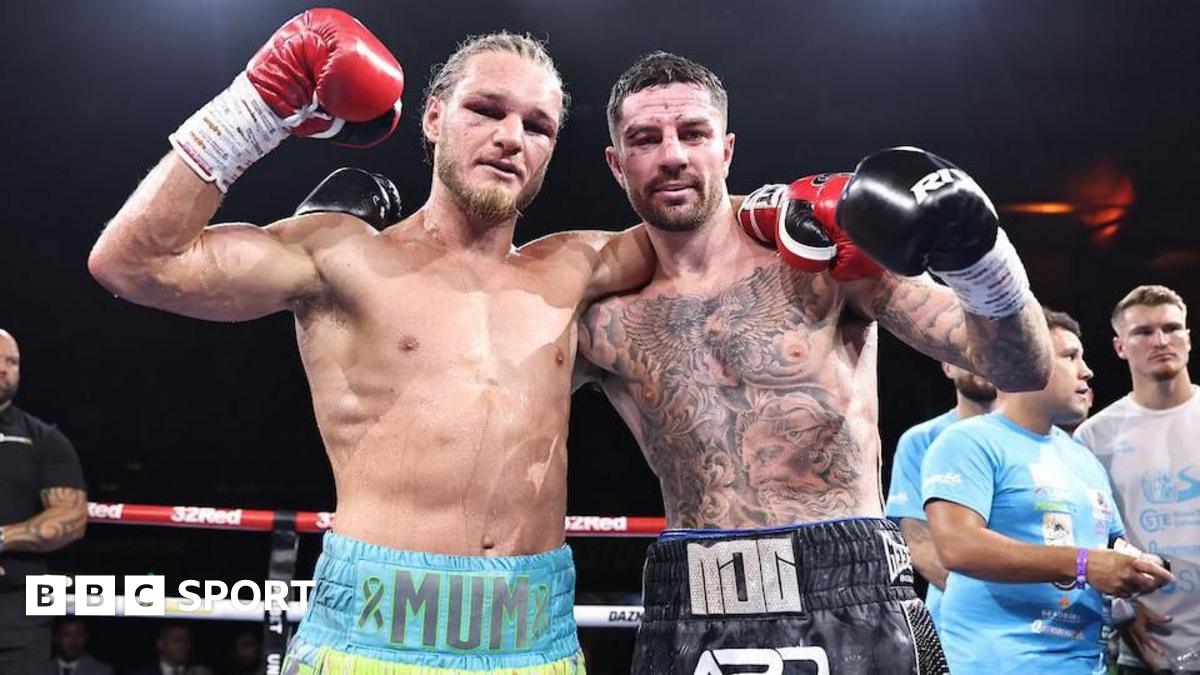What Is Brand Voice and Why It Matters

Brand voice is the unique way a company communicates, reflecting its values and identity through consistent messaging. It’s vital for building trust and loyalty among consumers, as a strong brand voice improves recognition and connection. With many consumers prioritizing shared values, comprehending brand voice becomes fundamental for standing out in a crowded market. But what are the key elements that define a brand’s voice, and how can you develop one that resonates with your audience?
Key Takeaways

- Brand voice is the unique personality expressed through communication, ensuring consistency across all channels and reflecting core values.
- A strong brand voice builds trust and loyalty, enhancing brand recognition and creating a consistent customer experience.
- Brands with a clear voice are 70% more preferred by consumers, differentiating them in crowded markets.
- Authenticity in brand voice fosters emotional connections, with 86% of consumers valuing genuineness for brand support.
- Developing a cohesive brand voice involves understanding target audiences, defining core values, and maintaining consistency across all communication channels.
What Is Brand Voice?

Brand voice is the unique personality a brand conveys through its communication, ensuring consistency across all channels and touchpoints. It reflects the brand’s core values and identity, remaining stable regardless of context.
Although brand tone can vary based on the audience or situation, the brand voice stays constant. This distinction is significant due to the impact of brand tones influencing how customers perceive the brand.
A well-defined brand voice helps your company stand out from competitors, encouraging better brand recognition and customer loyalty.
To create an effective brand voice, you need to understand your target audience and align your messaging with your brand’s mission and values, ensuring it resonates with your customers consistently across all platforms.
The Significance of Brand Voice

A strong brand voice is essential for building trust and loyalty among your audience, as it creates a consistent experience that customers can rely on.
When your messaging remains clear and recognizable, it improves brand recognition, making it easier for consumers to identify and connect with your brand, even without visual cues.
Building Trust and Loyalty
Trust and loyalty are crucial elements in building lasting relationships between consumers and companies, and a consistent brand voice plays a significant role in this process.
When you communicate with a clear brand tone of voice, customers become familiar with your style, creating a reliable experience across platforms. For example, brands like Slack and Harley Davidson showcase distinct voices that resonate with their audiences, enhancing customer loyalty.
Studies show that 64% of consumers prefer brands that share their values, emphasizing the importance of aligning your voice with core beliefs.
Enhancing Brand Recognition
When companies develop a strong and consistent voice, they greatly improve their brand recognition across various channels. A distinct brand voice allows consumers to easily identify and recall the brand, making it 3 to 4 times more likely to be recognized compared to competitors.
This consistency cultivates trust, as familiarity with a brand’s voice leads to deeper connections with customers. In fact, 64% of consumers state that shared values are key to their loyalty.
Additionally, consistent messaging can increase revenue by 23%, highlighting the financial benefits of effective brand voice. By clearly communicating their mission and values, companies create a cohesive narrative that elevates brand recognition, ensuring they stand out in a crowded market.
Key Differences Between Brand Voice and Tone

Grasping the key differences between brand voice and tone is essential for effective communication in any business.
Brand voice refers to the consistent personality and style of communication a brand uses across all channels, remaining stable and recognizable. It cultivates reliability and reinforces brand identity.
Conversely, brand tone is the emotional inflection applied to messages based on context and audience, varying depending on the situation. For instance, you might maintain a friendly voice throughout your messaging but adopt a serious tone in customer support emails at the same time as keeping a lighthearted tone in marketing campaigns.
Comprehending these distinctions enables you to tailor your communications effectively, ensuring that your messages resonate with your target audience without losing a cohesive identity.
Benefits of a Strong Brand Voice

A strong brand voice offers numerous advantages that can considerably impact a company’s success.
First, it cultivates customer loyalty by creating a consistent and relatable personality that encourages repeat business. Starbucks with a well-defined voice amplify recognition, as studies indicate that familiar messaging boosts brand recall by 13%.
Establishing a unique voice helps differentiate your company in a crowded market, where 70% of consumers prefer brands with a clear identity.
Moreover, a cohesive brand voice improves customer engagement; 64% of consumers feel a deeper connection to brands that communicate consistently.
Research shows that companies with a strong brand voice are 3.5 times more likely to enjoy strong brand loyalty, linking consistent messaging to trust and affinity among customers.
Aligning Brand Voice With Core Values

Aligning your brand voice with your core values is essential for creating authentic communications that resonate with your audience. When your voice reflects your mission, it promotes trust and loyalty among consumers who appreciate genuine connections.
A cohesive brand voice improves recognition, making it easier for customers to identify and relate to your brand across various platforms. Brands that effectively align their voice with core values attract and retain a loyal customer base, contributing to long-term business success and increased revenue.
Regular audits of existing communications can identify discrepancies, allowing you to adjust your voice to reinforce authenticity and relevance. Developing buyer personas based on core values can further guide the creation of a relatable and impactful brand voice.
The Role of Authenticity in Brand Voice

Authenticity in your brand voice is essential for establishing a genuine connection with your audience.
When your communication reflects true values and beliefs, you build trust, which greatly improves customer loyalty.
This trust not only distinguishes your brand in a crowded market but furthermore nurtures deeper emotional connections, leading to increased engagement and support from your consumers.
Genuine Connection With Audience
When brands communicate with a genuine voice, they cultivate a deeper connection with their audience, which is increasingly important in today’s market. Authenticity encourages trust, with 86% of consumers indicating it’s a key factor in their brand support. Brands that maintain a genuine voice can improve customer loyalty, as 64% of consumers form emotional connections with authentic brands. This consistency can lead to a 23% increase in customer engagement, making audiences more likely to interact. Furthermore, 73% of consumers prefer to buy from transparent brands, highlighting the competitive advantage gained through authenticity.
| Statistic | Impact on Brands | Consumer Response |
|---|---|---|
| 86% value authenticity | Increased trust | Support for the brand |
| 64% form emotional connections | Improved loyalty | Preference for engagement |
| 30% potential sales increase | Higher purchase likelihood | Resonance with values |
Building Trust and Loyalty
Trust and loyalty are essential components of any successful brand strategy, and a consistent, authentic brand voice plays a key role in achieving these outcomes.
When you express authenticity, consumers are more likely to connect with your brand. Here are three important points to reflect on:
- Transparency: 81% of consumers trust brands that communicate openly and genuinely, leading to stronger connections.
- Alignment with Values: 63% prefer to purchase from brands that reflect their personal beliefs, enhancing loyalty.
- Retention Rates: Brands with a consistent identity can achieve customer retention rates as high as 90%.
Steps to Create a Brand Voice

Creating a brand voice involves several critical steps that lay the groundwork for your brand’s identity. First, define your core values and mission statement, as they shape your brand’s personality. Next, research your target audience to understand their preferences, which helps tailor your voice. Then, analyze your existing content for consistency in tone and messaging, identifying strengths and weaknesses. After that, choose specific voice attributes that reflect your brand’s personality traits, guaranteeing clarity and relatability. Finally, document your brand voice guidelines, including do’s and don’ts, tone variations, and examples for consistent implementation.
| Step | Description | Purpose |
|---|---|---|
| Define Core Values | Establish your brand’s fundamental beliefs | Foundation for brand personality |
| Research Audience | Understand preferences and expectations | Tailor voice to resonate effectively |
| Analyze Current Style | Review existing content for consistency | Identify strengths and weaknesses |
| Choose Voice Attributes | Select traits that reflect your brand | Guarantee clarity and relatability |
| Document Guidelines | Create a style guide for consistent communication | Maintain alignment across channels |
Understanding Your Target Audience

Comprehending your target audience is crucial for developing an effective brand voice that resonates with them.
By analyzing demographic data, you can tailor your messaging to be more impactful. Here are three key steps to understand your audience better:
- Utilize market research: Conduct surveys and gather insights to learn about customer preferences, expectations, and pain points.
- Create buyer personas: Develop detailed profiles of your ideal customers to visualize their needs and interests, which guides your brand voice.
- Engage with customers: Use social media and feedback channels to gauge audience sentiment and adjust your communication strategies accordingly.
Conducting a Brand Voice Audit

A brand voice audit is a crucial process for organizations looking to refine their communication strategies. This audit involves reviewing all existing communication materials to assess their consistency, effectiveness, and alignment with your brand’s core values and mission statement.
During the audit, identify key personality traits and vocabulary in use, which can highlight successful communication methods and pinpoint areas needing improvement. Furthermore, analyzing audience feedback provides insights into how well your current brand voice resonates with customers.
It’s also vital to conduct a comparative analysis of competitors’ brand voices to uncover unique positioning opportunities. Regular audits, ideally quarterly, keep your brand voice relevant and adaptable to evolving language trends and audience expectations.
Developing Buyer Personas

Comprehending your brand voice is only part of the equation regarding effective communication; knowing your audience through well-developed buyer personas is equally important. Buyer personas are semi-fictional representations of your ideal customers, crafted from market research and real data.
To create accurate personas, consider:
- Demographics: Include age, gender, income level, and education.
- Psychographics: Assess interests, values, and pain points to understand motivations.
- Data Collection: Conduct surveys, interviews, and analyze social media and website metrics.
Utilizing buyer personas can lead to a 73% increase in customer engagement and a 50% rise in sales conversions.
Regularly updating these personas guarantees your marketing strategies remain relevant, aligning with evolving customer preferences and behaviors.
Examples of Successful Brand Voices

Now that you’ve grasped the significance of brand voice, it’s crucial to look at some successful examples that illustrate how effective it can be.
Brands like Wendy’s and Oatly have carved out distinctive voices that resonate with their audiences, showcasing their unique personalities in a crowded market.
Notable Brand Voice Examples
Prominent brands effectively demonstrate how a well-defined brand voice can greatly improve customer engagement and brand recognition.
Here are a few notable examples:
- Wendy’s: Their sharp, witty voice shines on social media, using humor to engage customers and stand out in the fast food crowd.
- Netflix: By adopting a casual, approachable tone, they create a relaxed atmosphere that resonates with binge-watchers, nurturing a youthful connection.
- Mailchimp: Their plainspoken, humorous voice prioritizes clear communication, avoiding jargon and promoting a friendly persona.
These brands illustrate that a distinctive voice not just attracts attention but also builds lasting relationships with customers, reinforcing brand identity and loyalty in a competitive marketplace.
Industry-Specific Voice Characteristics
When crafting a brand voice, it’s essential to contemplate how different industries shape the characteristics and expressions of that voice.
For instance, Harley Davidson embodies an aggressive and rebellious tone, appealing to those who seek freedom and adventure.
Conversely, Skittles uses a wacky and humorous voice, characterized by playful language that helps it stand out in the candy sector.
Slack opts for a clear and warm tone, promoting inclusivity in workplace communication.
Oatly challenges traditional dairy narratives with its quirky, honest voice, whereas Mailchimp employs a plainspoken, genuine personality, connecting with small businesses and entrepreneurs.
Each of these brand voices is customized to resonate with specific audiences, showcasing the importance of industry-specific characteristics in communication strategies.
Maintaining Consistency Across Channels

Maintaining consistency in brand voice across various channels is crucial for reinforcing your brand identity and ensuring that customers can easily recognize and connect with your brand, regardless of where they encounter it.
Here are three key strategies to achieve this:
- Document a Style Guide: Create a thorough style guide detailing voice attributes, tone variations, and language preferences to unify communication efforts across teams.
- Regular Content Audits: Conduct audits of existing content to identify inconsistencies in brand voice, ensuring alignment with your brand values and personality.
- Adapt Tone Carefully: Although your brand voice should remain consistent, adapt the tone for different channels to resonate with diverse audiences while maintaining a cohesive message.
Adapting Your Brand Voice Over Time

As consumer preferences and cultural trends shift, adapting your brand voice becomes essential for staying relevant in a competitive market. Regular audits of your communication strategies can help identify necessary adjustments, ensuring alignment with evolving customer expectations. Utilizing feedback mechanisms, like surveys and social media interactions, allows you to understand audience perceptions and refine your voice accordingly.
| Frequency of Audits | Feedback Mechanisms | Key Focus Areas |
|---|---|---|
| Quarterly | Customer Surveys | Tone Adaptability |
| Semi-Annually | Social Media Feedback | Cultural Relevance |
| Annually | Focus Groups | Industry Trends |
| Ongoing | Website Analytics | Customer Engagement |
| As Needed | Direct Customer Queries | Brand Consistency |
Maintaining flexibility during preserving core values encourages authentic connections with diverse audiences.
Frequently Asked Questions

What Is a Brand Voice and Why Is It Important?
A brand voice is the unique personality a company uses in all its communications, reflecting its values and culture consistently.
It’s important as it helps establish a recognizable identity, nurtures customer loyalty, and builds trust.
By maintaining a consistent voice, you guarantee that your messaging resonates with your target audience.
This not just differentiates you from competitors but likewise improves engagement, making your brand more relatable and memorable in a crowded market.
What Are the 3 C’s of Brand Voice?
The 3 C’s of brand voice are Consistency, Clarity, and Character.
Consistency guarantees your brand’s voice remains uniform across all channels, cultivating trust among your audience.
Clarity focuses on delivering messages in an understandable way, avoiding jargon that may confuse your customers.
Character refers to the unique personality traits that make your brand memorable.
Together, these elements create a strong and recognizable identity, helping you connect effectively with your target audience.
What Are the Three Main Elements of Our Brand Voice?
The three main elements of your brand voice are personality, style, and messaging.
Personality reflects the traits that define your brand, such as being playful or authoritative.
Style encompasses how you express these traits through vocabulary and sentence structure.
Finally, messaging involves the consistent themes and values you convey, ensuring all communications align with your brand’s mission.
Together, these elements create a cohesive voice that resonates with your audience and improves brand recognition.
What Are the 4 Dimensions of Brand Voice?
The four dimensions of brand voice include vocabulary, sentence structure, tone, and personality traits.
Vocabulary refers to the specific words and phrases your brand chooses, reflecting its identity.
Sentence structure concerns the complexity and length of your sentences, varying from short to long based on your audience.
Tone adapts emotional inflections for different contexts, whereas personality traits embody the essence of your brand, making it relatable and memorable to your target audience.
Conclusion

In conclusion, comprehension and developing a strong brand voice is crucial for effective communication and brand recognition. By aligning your voice with your core values and maintaining consistency across all channels, you can cultivate trust and loyalty among consumers. Adapting your brand voice as needed guarantees it remains relevant over time. In the end, a cohesive brand voice not just differentiates you in the market but likewise improves engagement with your target audience, driving long-term success.
Image Via Envato
This article, "What Is Brand Voice and Why It Matters" was first published on Small Business Trends
What's Your Reaction?
 Like
0
Like
0
 Dislike
0
Dislike
0
 Love
0
Love
0
 Funny
0
Funny
0
 Angry
0
Angry
0
 Sad
0
Sad
0
 Wow
0
Wow
0





























































































